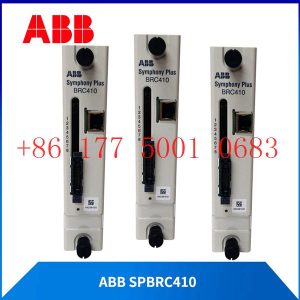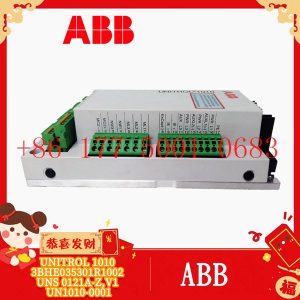Description
AC389AE01 HIEE300888R0001 Controller module
AC389AE01 HIEE300888R0001 Controller module
Module Clips Drive controller servo moto
AC389AE01 HIEE300888R0001 Controller moduleSuitable for steel manufacturing, thermal power generation, hydroelectric power generation, nuclear power generation, wind power generation, gas supply, and other glass manufacturing, paper mills, mechanical manufacturing, electronic manufacturing, automotive manufacturing, aviation manufacturing, chemical manufacturing, coal mining and selection, oil and natural gas mining and selection, metal mining and selection, and non-metallic mining and selection
The three corners of the sound wave screen are respectively pasted with transducers for transmitting and receiving sound waves in the X
and Y directions (transducer: made of special ceramic materials, divided into transmitting transducers and receiving transducers. It controls The electrical
signal sent by the device through the touch screen cable is converted into sound wave energy and the surface acoustic wave energy formed by the reflection
stripes is converted into an electrical signal.), the four sides are engraved with reflection stripes that reflect surface ultrasonic waves. When a finger or soft object touches
the screen, part of the sound wave energy is absorbed, thus changing the received signal. After processing by the controller, the X and Y coordinates of the touch are obtained.
6 categories let you understand the development trend analysis of touch screen
After Apple launched a series of smart terminals, the touch screen industry has developed rapidly in recent years, and related products have become hot sellers in the market.
In the future, the application fields of touch display screens will become more widespread in daily life.
Analysis of touch screen types and various technology development trends
1. Types of touch screen technology
The touch screen is a positioning device that allows users to directly input coordinate information to the computer with their fingers
. Like the mouse and keyboard, it is also an input device.
Touch screens have many advantages such as durability, fast response, space saving, and ease of communication. Using this technology, you can operate the host by gently touching the
icons or text on the computer display with your fingers, making human-computer interaction more direct. This technology
greatly facilitates those who do not know how to operate computers. User. It has been widely used in control, information query and other
aspects in the fields of industry, medical treatment and communication.
1. Resistive touch screen
Analog resistive screen
Analog resistive touch screen is what we usually call “resistive screen”, which is a touch screen controlled by pressure sensing. It uses two layers of ITO (indium tin oxide) plastic films plated with
conductive functions. The two pieces of ITO are equipped with particle fulcrums, so that when the screen is not pressed, there is a certain gap between the two layers of ITO and is in a non-conductive state.
When the operator presses the screen with his fingertip or pen tip, the pressure will cause the film to be concave, causing the ITO layer to contact the conductor due to deformation. The corresponding pressure
point is then calculated by detecting the voltage changes in the X-axis and Y-axis to complete the entire screen. touch processing mechanism. Currently, there are many types of analog resistive touch screens,
such as 4-wire, 5-wire, 6-wire, and 8-wire. As shown in Figure 1, the more wires, the higher the detection precision, but the cost will also increase. The resistive screen does not support multi-touch, has high power
consumption, and short lifespan. At the same time, long-term use will cause detection point drift and requires calibration. However, resistive screens have simple structures and low costs. Before capacitive
touch screens matured, they once occupied most of the touch screen market.
digital resistive screen
The basic principle of the digital resistive screen is similar to the analog one. Unlike the analog resistive screen, which evenly coats the
ITO layer on the glass substrate, the digital resistive screen just uses a
substrate with ITO stripes. The ITO stripes on the upper and lower substrates are perpendicular to each other. The digital resistive screen is
more similar to a simple switch, so it is usually used as
a membrane switch. Digital resistive screens enable multi-touch control.
2. Capacitive touch screen
surface capacitive
Surface capacitive touch screens sense touch behavior on the screen surface through electric field induction. Its panel is a uniformly coated ITO
layer. Each of the four corners of the panel has an outlet wire
connected to the controller. During operation, the surface of the touch screen generates a uniform electric field.
When a grounded object touches the screen surface, the electrodes can sense the change in charge on the screen surface and determine the
coordinates of the touch point. Surface capacitive touch screens
have long service life and high light transmittance, but have low resolution and do not support multi-touch. They are currently mainly used in large-size
outdoor touch screens, such as public information platforms
(POI) and public service (sales) platforms (POS). ) and other products.
Projected capacitive screen
Projected capacitive touch screens use electrostatic field lines emitted by touch screen electrodes for sensing. Projected capacitive sensing technology
can be divided into two types: self-capacitance and interactive
capacitance. Self-capacitance is also called absolute capacitance. It uses the sensed object as the other plate of the capacitance. The object induces
charge between the sensing electrode and the sensed electrode
, and the position is determined by detecting changes in the coupling capacitance. But if it is a single touch, through capacitance changes, there is
only one set of coordinates determined in the X-axis and Y-axis directions,
and the combined coordinates are also unique; if there are two points of touch on the touch screen and the two points are not in the same X direction
Or in the same Y direction, if there are two coordinate
projections in the X and Y directions, 4 coordinates are combined. Obviously, only two coordinates are real, and the other two are commonly known as
“ghost points”. Therefore, self-capacitive screens cannot achieve true multi-touch;
interactive capacitance is also called crossing capacitance, which is the capacitance generated through the coupling of adjacent electrodes. When the
sensed object is close to the electric field line from one electrode to
another electrode, the interaction The change in capacitance will be felt. When the horizontal electrodes send out excitation signals in sequence, all
the vertical electrodes will receive the signal at the same time. In this way, the
capacitance value of the intersection of all horizontal and vertical electrodes can be obtained, that is, the two-dimensional plane of the entire touch
screen. Capacitor size. When human fingers approach, the local capacitance will
decrease. Based on the two-dimensional capacitance change data of the touch screen, the coordinates of each touch point can be calculated.
Therefore, even if there are multiple touch points on the screen, each touch point can be calculated. the real coordinates.
In both types of projected capacitive sensors, the sensing capacitance can be designed in such a way that the touch of a finger is detected at any
given time. The touch is not limited to one finger, but can also be Multiple fingers. Since 2007,
with the great success of Apple”s iPhone and iPad series products, projected capacitive screens have begun to develop rapidly, quickly replacing
resistive touch screens and becoming the mainstream touch technology in the current market.
Contact: Mr. Lai
Wechat:17750010683
Whats app:+86 17750010683
Skype:+86 17750010683
QQ: 3221366881
3221366881@qq.com
https://www.xmamazon.com
https://www.xmamazon.com
https://www.plcdcs.com/
www.module-plc.com/
https://www.ymgk.com
330103-00-03-10-02-00 | Approach probe | New original
330100-50-05 | Preprocessor sensor | In stock
330100-90-05 | Preprocessor sensor | New original
330100-90-00 | Preprocessor sensor | In stock
3300/16 | Gap dual vibration monitor | In stock
3300/20-12-01-02-01-02 | Dual thrust position monitor | New original
31000-16-10-00-154-00-02 | 31000 close to probe housing | In stock
24765-03-01 | Expansion transducer assembly| New original
24765-02-01 | Enclosure extension transducer assembly | In stock
24765-02-00 | Enclosure extension transducer assembly | New original
24765-01-01 | Vibration monitor | In stock
2300/20-CN | Vibration monitor | New original
2300/20-00-00 | Vibration monitor | In stock
2300/20_KIT-001-00 | Condition monitoring system suite | New original
2300/20_KIT-001-02-00 | Condition monitoring system suite | In stock
2300/20-00 | Vibration monitor | New original
1900/65A-01-01-03-CN-00 | Universal device monitor | In stock
1900/65A-01-00-03-CN-01 | Universal Device monitor | New original
1900/65A-01-00-03-00-01 | Universal device monitor | In stock
1900/65A-00-01-01-CN-00 | Universal device monitor | In stock
1900/65A-00-01-03-00-00 | Universal Device monitor | New original
1900/65A-00-00-01-00-00 | Universal device monitor | In stock
330100-50-05 | Preprocessor sensor | New original
143416-01 | I/O module | In stock
143416-01 | Preprocessor sensor
18745-03 | Preprocessor sensor
177314-02 | Close to system test suite TK-3E
177314-01 | Close to system test suite TK-3E
177313-02-02 | Close to system test suite TK-3E
177313-02-01 | Close to system test suite TK-3E
135613-03-00 | High temperature enclosure expansion transducer assembly
135613-02-00 | High temperature enclosure expansion transducer assembly
177313-01-02 | Access to system test suite
135613-01-00 | High temperature enclosure expansion transducer assembly
2300/20_KIT-001-02-00 | Condition monitoring system suite
135613-01-00 | High temperature enclosure expansion transducer assembly
125840-02 | Ac power input module
126648-01 | External terminal
106M1079-01 | Ac power module
1.Has been engaged in industrial control industry for a long time, with a large number of inventories.
2.Industry leading, price advantage, quality assurance
3.Diversified models and products, and all kinds of rare and discontinued products
4.15 days free replacement for quality problems
ABB — AC 800M controller, Bailey, PM866 controller, IGCT silicon controlled 5SHY 3BHB01 3BHE00 3HNA00 DSQC series
BENTLY — 3500 system/proximitor, front and rear card, sensor, probe, cable 3500/20 3500/61 3500/05-01-02-00-001 3500/40M 176449-01 3500/22M 138607-01
Emerson — modbus card, power panel, controller, power supply, base, power module, switch 1C31,5X00, CE400, A6500-UM, SE3008,1B300,1X00,
EPRO — PR6423 PR6424 PR6425 PR6426 PR9376 PR9268 Data acquisition module, probe, speed sensor, vibration sensor
FOXBORO — FCP270 FCP280 FCM10EF FBM207 P0914TD CP40B FBI10E FBM02 FBM202 FBM207B P0400HE Thermal resistance input/output module, power module, communication module, cable, controller, switch
GE —- IS200/215/220/230/420 DS200/215 IC693/695/697/698 VMICPCI VMIVME 369-HI-R-M-0-0-E 469 module, air switch, I/O module, display, CPU module, power module, converter, CPU board, Ethernet module, integrated protection device, power module, gas turbine card
HIMA — F3 AIO 8/4 01 F3231 F8627X Z7116 F8621A 984862160 F3236 F6217 F7553 DI module, processor module, AI card, pulse encoder
Honeywell — Secure digital output card, program module, analog input card, CPU module, FIM card
MOOG — D136-001-007 Servo valve, controller, module
NI — SCXI-1100 PCI – PXIE – PCIE – SBRIO – CFP-AO-210 USB-6525 Information Acquisition Card, PXI Module, Card
Westinghouse — RTD thermal resistance input module, AI/AO/DI/DO module, power module, control module, base module
Woodward — 9907-164 5466-258 8200-1300 9907-149 9907-838 EASYGEN-3500-5/P2 8440-2145 Regulator, module, controller, governor
YOKOGAWA – Servo module, control cabinet node unit
Main products:
PLC, DCS, CPU module, communication module, input/output module (AI/AO/DI/DO), power module, silicon controlled module, terminal module, PXI module, servo drive, servo motor, industrial display screen, industrial keyboard, controller, encoder, regulator, sensor, I/O board, counting board, optical fiber interface board, acquisition card, gas turbine card, FIM card and other automatic spare parts






